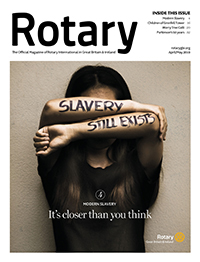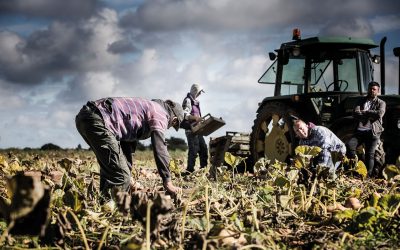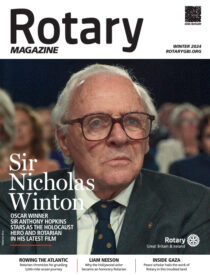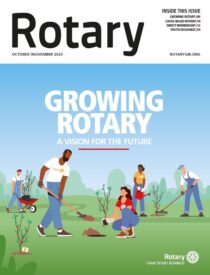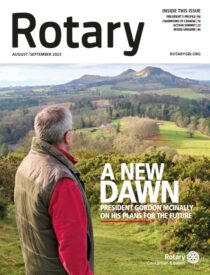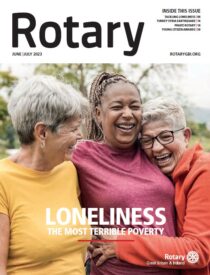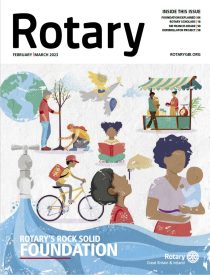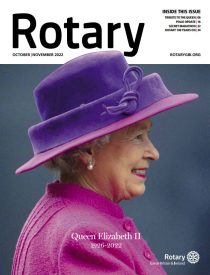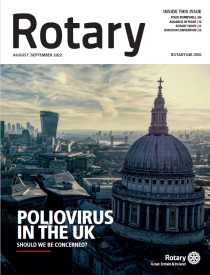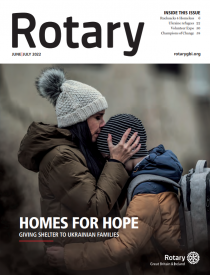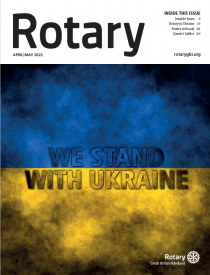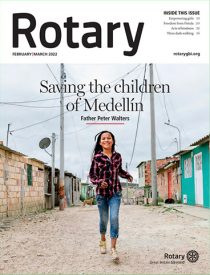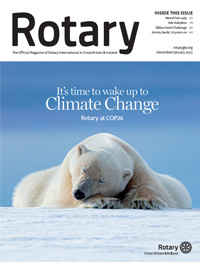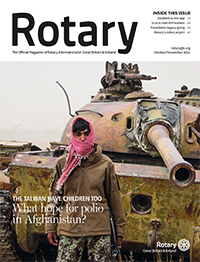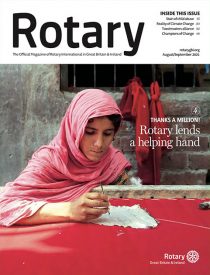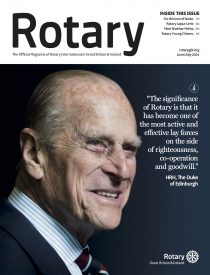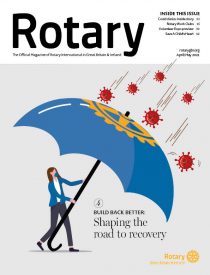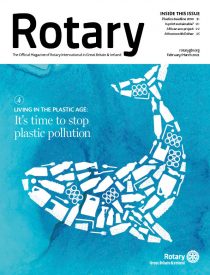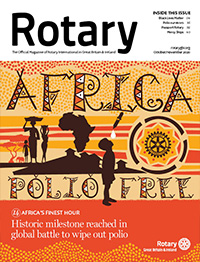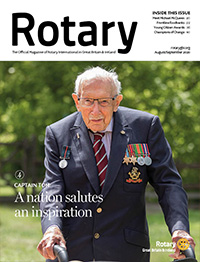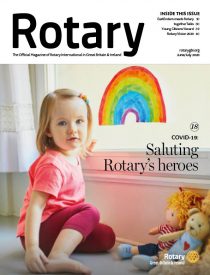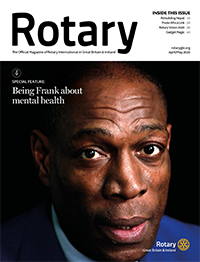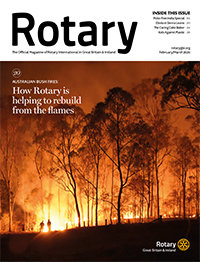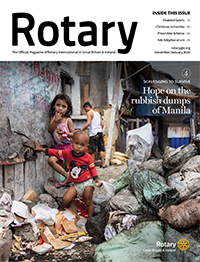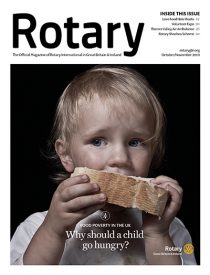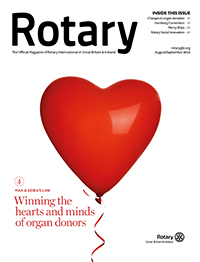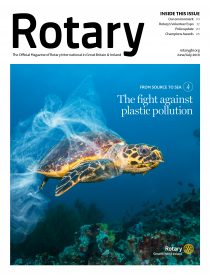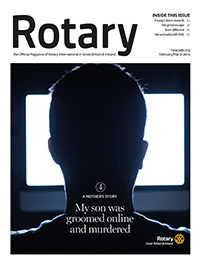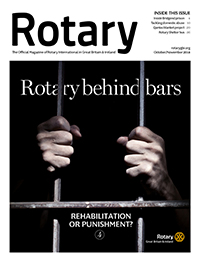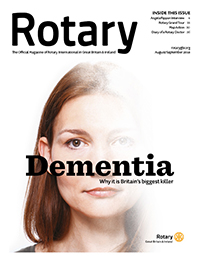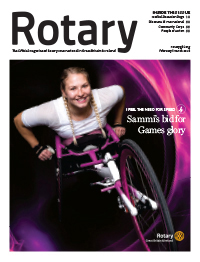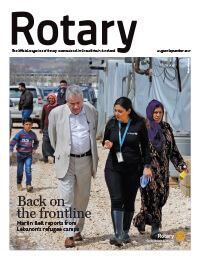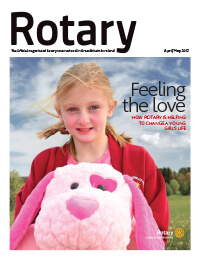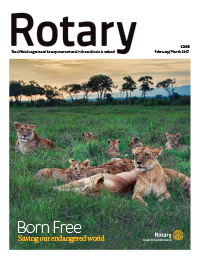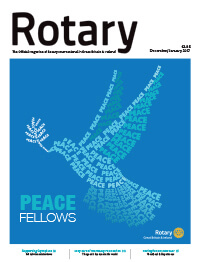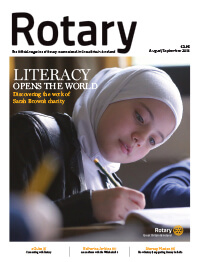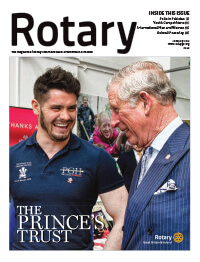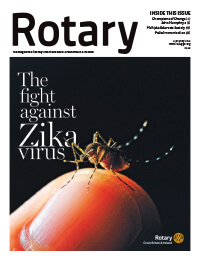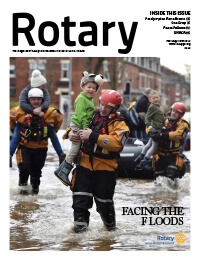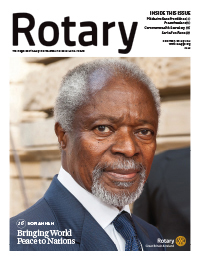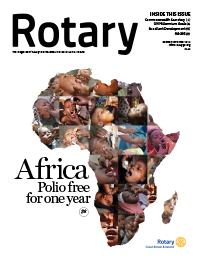According to the latest FIFA world rankings, Indonesia is placed 159th of 211 footballing countries.
Given what we saw recently on the island of Sulawesi, that situation is unlikely to change soon.
Every football pitch and piece of unoccupied land was being used for camps and temporary housing following the disastrous tsunami and earthquake which devastated the coastal city of Palu.
Indonesia is the fourth most populous country in the world with over 225 million people living in an archipelago of 17,000 islands. The islands straddle the Equator and the ‘Ring of Fire’ which circles the Pacific Ocean causing frequent volcanic activity, earthquakes and tsunamis.
At around 6pm on Friday, September 28th, an earthquake centred 80km out at sea, north of Palu, created a tsunami which struck the city with little warning.
As the tsunami flattened the coastal areas, the earthquake caused havoc further inland, damaging and destroying buildings as well as infrastructure.
More than 2,000 people were killed, over 1,300 were declared missing, and 212,000 people displaced from their homes.
At around 6pm on Friday, September 28th, an earthquake centred 80km out at sea, north of Palu, created a tsunami which struck the city with little warning.”
So what did Disaster Aid International’s country partners do?
An initial assessment was carried out by Di Holland, an experienced Disaster Aid response team leader from Australia, four weeks after the disaster struck.
This was followed by a shipment of tents and family survival kits from Malaysia, along with SkyHydrant water filters brought in from the UK & Ireland, and Australia. This was all overseen by our first deployment team of Andrew Gunn and Phil Gribble from Australia.
Then, under the care of a second deployment team from the UK & Ireland Craig Roberts and I, carried a consignment of Sawyer water filters.
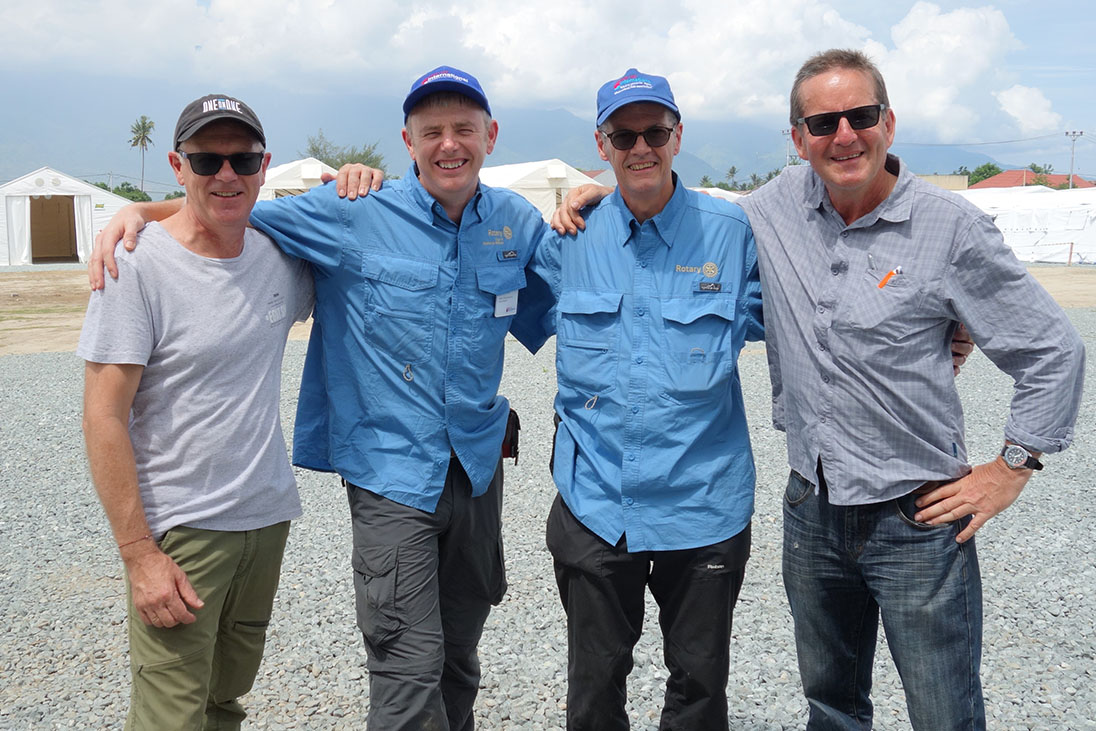

The Disaster Aid response team Andrew Gunn, Craig Roberts, Matt Gemmell and Phil Gribble.
The SkyHydrants and Sawyer water filters differ greatly in size, but they essentially consist of the same technology by using hollow membrane fibres to trap sediment and bacteria, and deliver immediately potable water.
On arrival in Palu, Craig and I were subjected to the culture shock of a new environment. The streets were dusty, with no real pavements. They were lined with small shacks and stalls selling fried chicken and glass bottles with brightly coloured liquid, which turned out to be petrol for the armada of mopeds and motor cycles competing for space with cars and vans.
It was virtually impossible to cross the road. There were even cows and chickens wandering about in the melee.
One of the things that is very important in work of this nature is to involve the local population in all aspects of the venture, both in planning and implementation.”
In those first few minutes of our deployment, the trepidation and apprehension evaporated. It was no longer alien, just different and certainly exotic.
All of the sights and smells were overlaid by the sound of the call to prayer from the proliferation of mosques or ‘masjid’ in Indonesian Bahasa, the official language.
There seemed to be a masjid almost within touching distance everywhere and the amplified prayer calls were entrancing and very evocative and I was smitten.
The Indonesians have a word ‘bule’ which means ‘white foreigner’.
It doesn’t seem to be derogatory and I often heard children shouting it in pure bravado and, when I waved, they would come over and become my shadows whilst I was in their village.
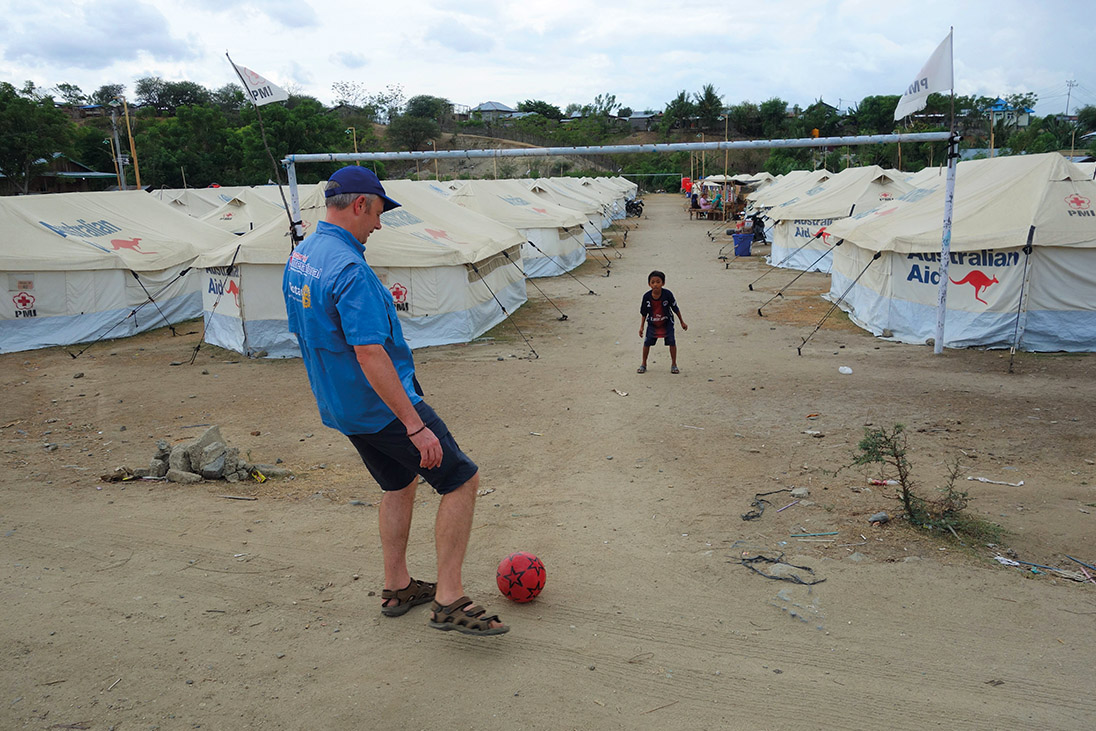

Every expanse of land, including football pitches, were being used to support displaced families with temporary accommodation.
Our guide, translator and general fixer was Ronal, a remarkable 21-year-old student, and our driver was Ronal’s best friend, Gilbert. Virtually no-one spoke English, but somehow Ronal got us into meetings with important stakeholders co-ordinating the disaster response for a variety of agencies.
One of the things that is very important in work of this nature is to involve the local population in all aspects of the venture, both in planning and implementation. Disaster Aid International does not give people hand-outs or charity, we give them a hand-up to help themselves.
The first of the SkyHydrants that we installed was memorable. We needed a large water tank to be repurposed and turned into the holding tank for the filtered clean water, but the inside of the tank was very dirty with sediment.
However, with the tank on its side and an adult spraying a hose, the boys scrubbed the interior of the tank until it was sparkling clean.
They had the time of their lives and really enjoyed themselves but, more importantly, felt useful helping their community to help itself.
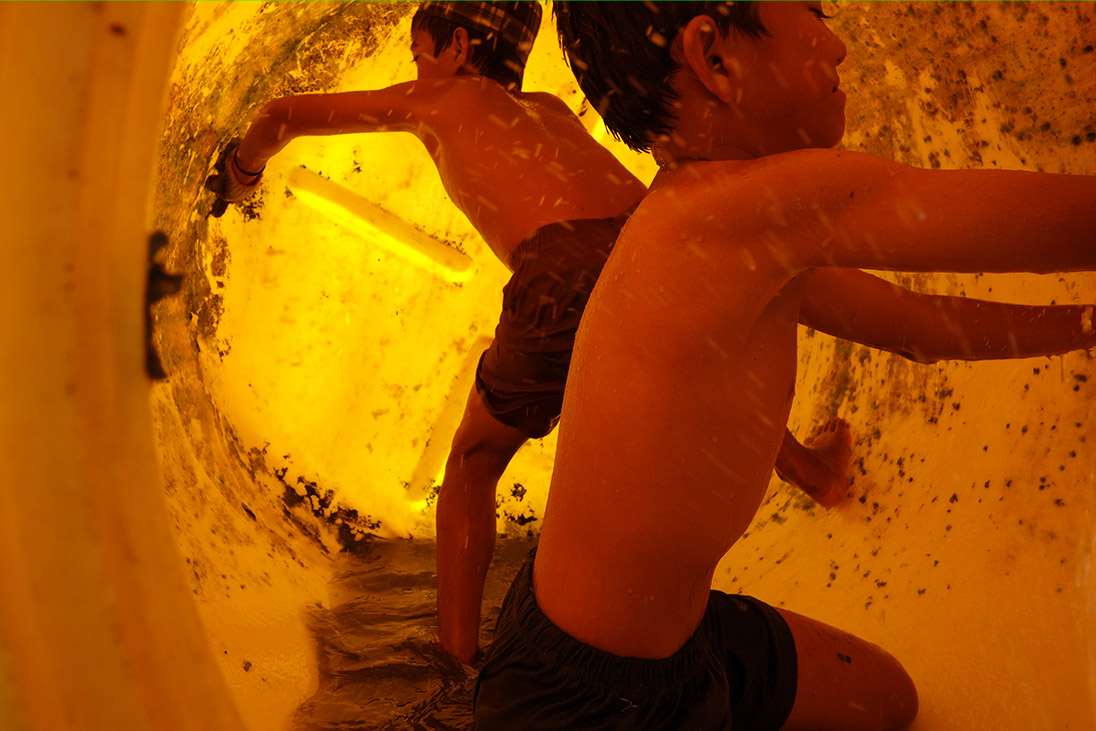

Children get involved in helping their community by cleaning the inside of a water tank.
This type of local involvement, allowing the affected population to be fully involved in the planning and implementation of the aid, was critical to our success.
With several installations, the residents did the hands-on installation under our watchful eyes which was crucial for their self-esteem, knowing that they helped in their own recovery.
Using Ronal’s indispensable services, we had numerous meetings with stakeholders providing us with leads of possible locations for our water filters.
At this point in the timeline of the response to the disaster, many people were still living in camps, some makeshift and fairly basic, whilst other camps were more organised but essentially still under canvas.
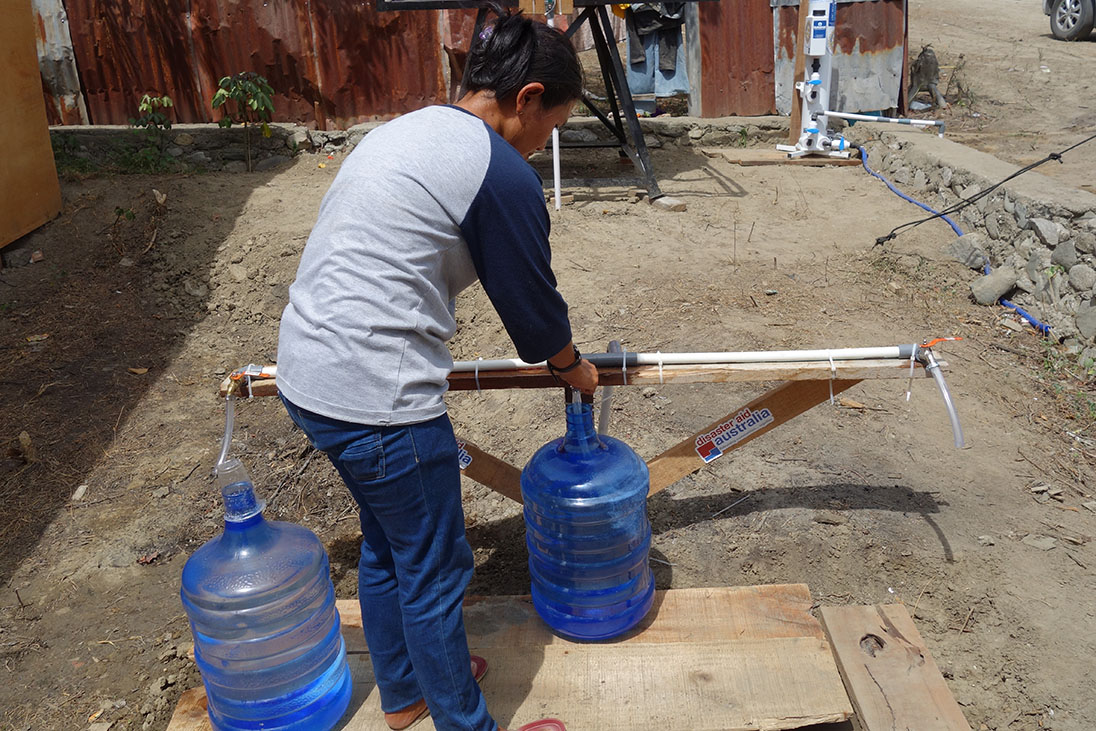

A local resident collects clean water from a newly-installed tap.
A number of organisations and NGOs, including Rotary clubs from all over Indonesia, were constructing temporary housing camps and these were springing up at an incredible speed.
Constructed of a skeleton of light aluminium bars, not unlike Meccano, and then cladded and divided into basic rooms, these ‘Huntara’ are intended to house families until proper housing can be constructed, perhaps up to a year later.
Our strategy was to try and install our SkyHydrant filters in areas of greatest need to have the maximum impact for the health of the people. In total, along with Disaster Aid Australia, we installed eight SkyHydrant water filters to camps and communities in the Palu area.
As well as health, clean water impacts on wealth, as boiling is no longer required, saving fuel, and there is no longer the need to buy expensive and wasteful bottled water.
More than 2,000 people were killed, over 1,300 were declared missing, and 212,000 people displaced from their homes.”
It is important when deploying that we do not become ‘disaster tourists’ but equally for a small charity relying on donations, it is important to document the horror and be able to use this to solicit funds for the current and future activity in a crowded market.
Craig and I took many photographs, some of which were circulated on social media. The damage was horrific and each image represents at least one human tragedy.
The tsunami devastated everything in Palu. Ships were thrown ashore, hotels, houses and shopping malls were completely destroyed. An important road bridge on the coastal road was severed and a beautiful masjid built above the water with a walkway from the shore wrecked.
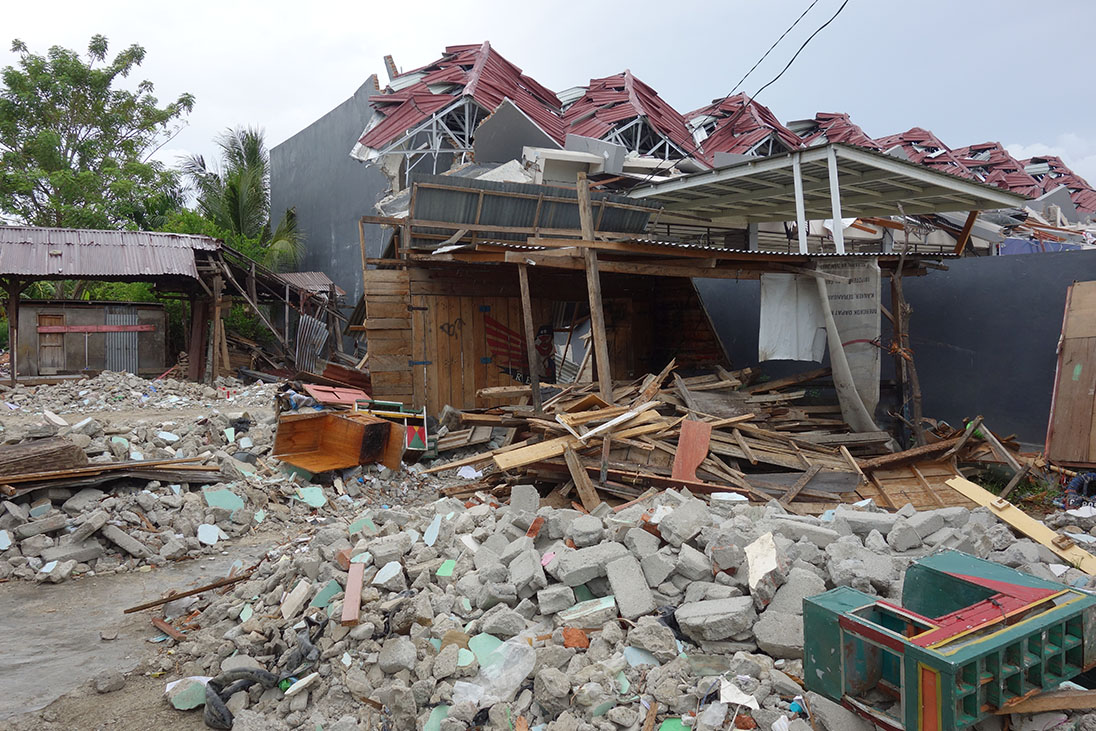

The disaster left buildings completely reduced to rubble.
The most horrific and upsetting damage we saw was when we accidentally stumbled on a small village, south of Palu.
The road ended in a 20-foot drop. The road was buckled and twisted, as houses on either side were grotesquely distorted with huge deep holes and craters in the ground.
One can only imagine the horror of trying to protect and keep your family together during this disaster.
As we left, we saw gravestones being prepared. All were dated 28 September 2018; a truly poignant and haunting sight.
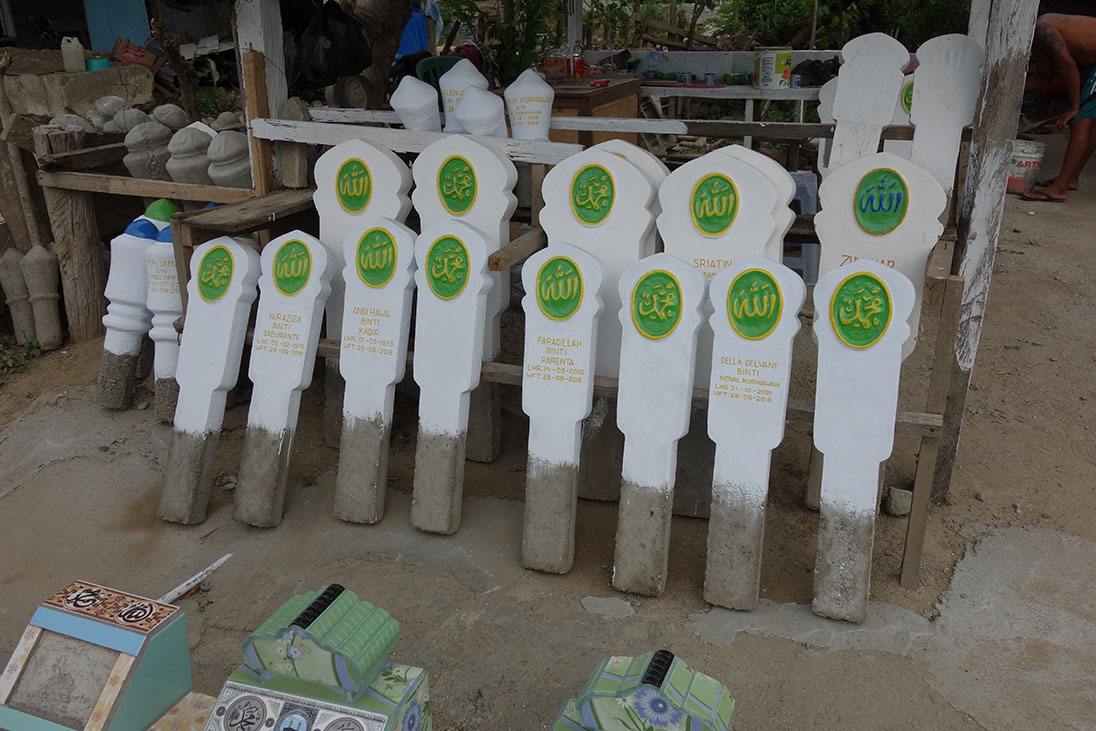

Gravestones are prepared with victims raging from 17 to 79-years-old.
For more information on Disaster Aid UK & Ireland visit their website.








